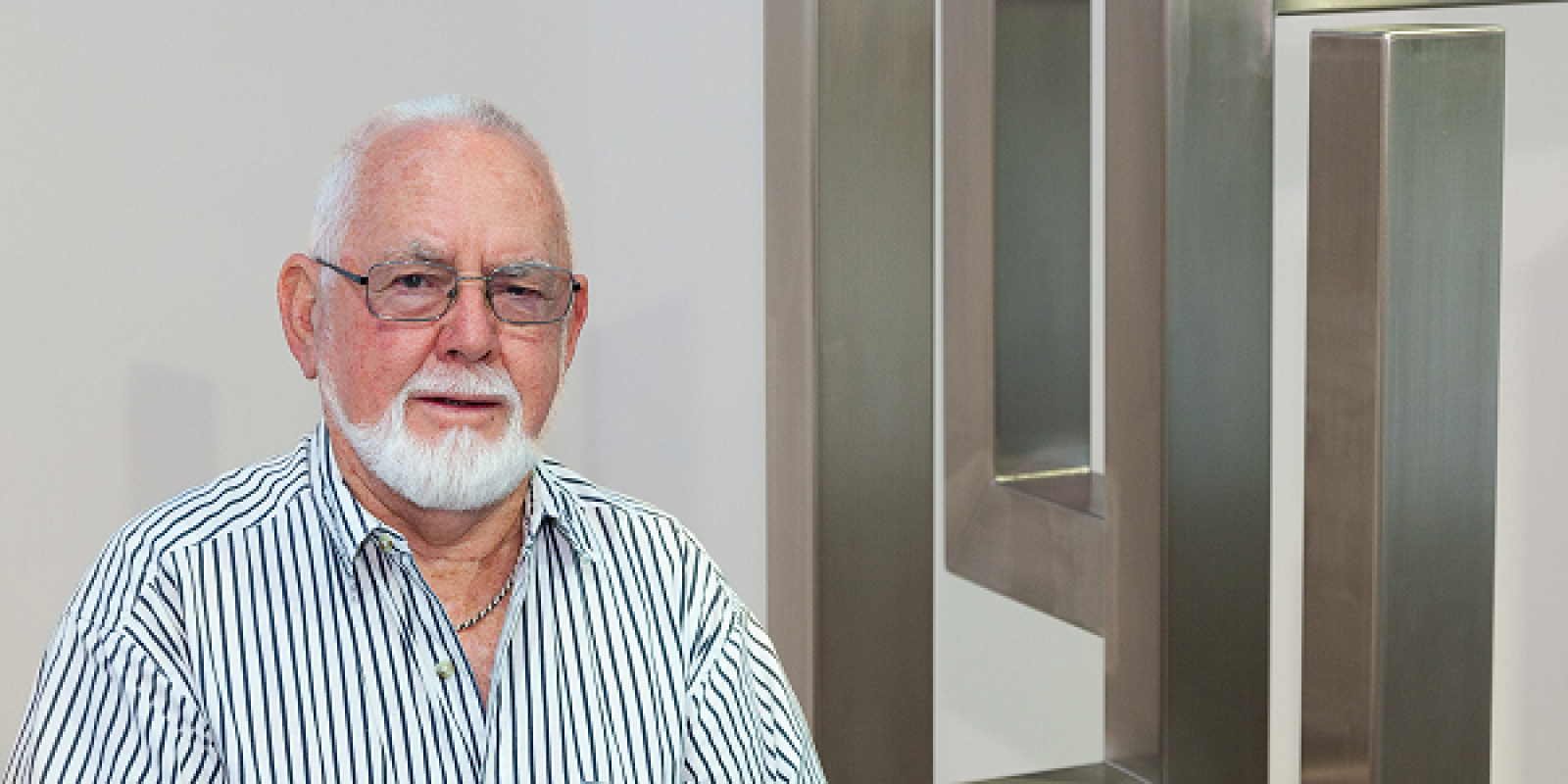Terry Fuller

Tell us about yourself and your art practice.
I have often reflected on where my propensity for sculpture came from, and how it developed.
I can remember in my early childhood, age about 9 or 10, carving pieces of wood. This remained a vague interest until I was working in the development of a missile system and the project needed scale models of Russian aircraft.
These models were not available in hobby shops, so I offered to carve some.
That sparked my interest in sculpture and I began to spend more time creating ‘art’ objects with welding steel and carving wood.
The family eventually moved to Canberra and I discovered the Canberra School of Art where I learnt to work in clay, to make moulds and to use ciment fondu and eventually working in bronze.
Sculpture remained an interest, albeit gradually becoming more serious, until I retired and moved to the South Coast and discovered a foundry where I could pursue my interest in bronze and where I was able to be part of the whole process from conception to the application of patina on the finished piece.
As a prominent local artist, known for a number of outdoor, public artworks across Eurobodalla, can you tell us what it was like making artworks for an indoor exhibition?
I have always maintained that there is an inherent appeal when a piece is produced ‘big’ that lifts its appeal from the ordinary to the extraordinary. Something similar happens when a piece is taken ‘out of context’. I considered these factors of size and context when producing pieces for this indoor exhibition.
When working ‘small’ the scale is easier and so to is the fact that I am more in control, over what is happening, when it happens and who is making it happen. Another benefit when producing pieces for an indoor exhibition is that I don’t have to consider the environmental aspects of the material as much as for an outdoor installation. The surface is more permanent when indoors, rust, paint, changes in patina are more predictable.
You have used steel, stone and pewter to produce your works, but have cited bronze as your preferred material. Can you tell us the reason for this, and the challenges and triumphs of working with these materials in general?
Bronze was developed in the Middle East around 3800BC by combining copper and tin, both of which are soft metals but when combined make a metal that is much harder than either. The working of bronze reached its finest expression in China during the Shang Dynasty around 1500BC and the proportions of its component parts were kept standard for centuries. Bronze has been the choice of sculptors for millennia and there are still examples of bronzes in existence from 800BC.
Bronze can be made to take almost any form or shape that the sculptor wants, will last for centuries, does not need any maintenance and develops a patina that enhances its appearance. I feel that to work in bronze is in some way to commune with the ancients.
Pewter is somewhat similar to bronze in that is is malleable, can be cast and worked readily because it is soft (softer than bronze) but does not have the aesthetic appeal or history. Stone and steel have specific properties that lend them to specific subjects. I tend to follow the rule of ‘truth to material’ so that I choose a material that I feel warrants a certain subject.
This is a two person exhibition with your daughter. Can you tell us about the process of putting this exhibition together, and what, if any influences she has had on your work for this exhibition or in general?
To have a person whose artistic ability you respect and admire be able to look at your work and say ‘not sure about that Dad’, or ‘what abut making a finger of metal?’is of immeasurable value. When developing a body of work for an exhibition the artist tends to get too close (mentally) to the work and can subsequently lose perspective. There is also the value in being avle to discuss ideas and possibilities for different directions.
I feel that because Amanda and I create in different mediums we have been able to have a variety of directions for this exhibition. Amanda’s training at the University in Fine Arts has enabled her to look at periphery and background of art. My time at the Canberra School of Art did not include any of this rather, concentrating solely on the practical production of sculpture; shape, form, proportion and materials.
Amanda’s training enabled her to give our exhibition more balance and to bring the two art forms into a more cohesive whole.
